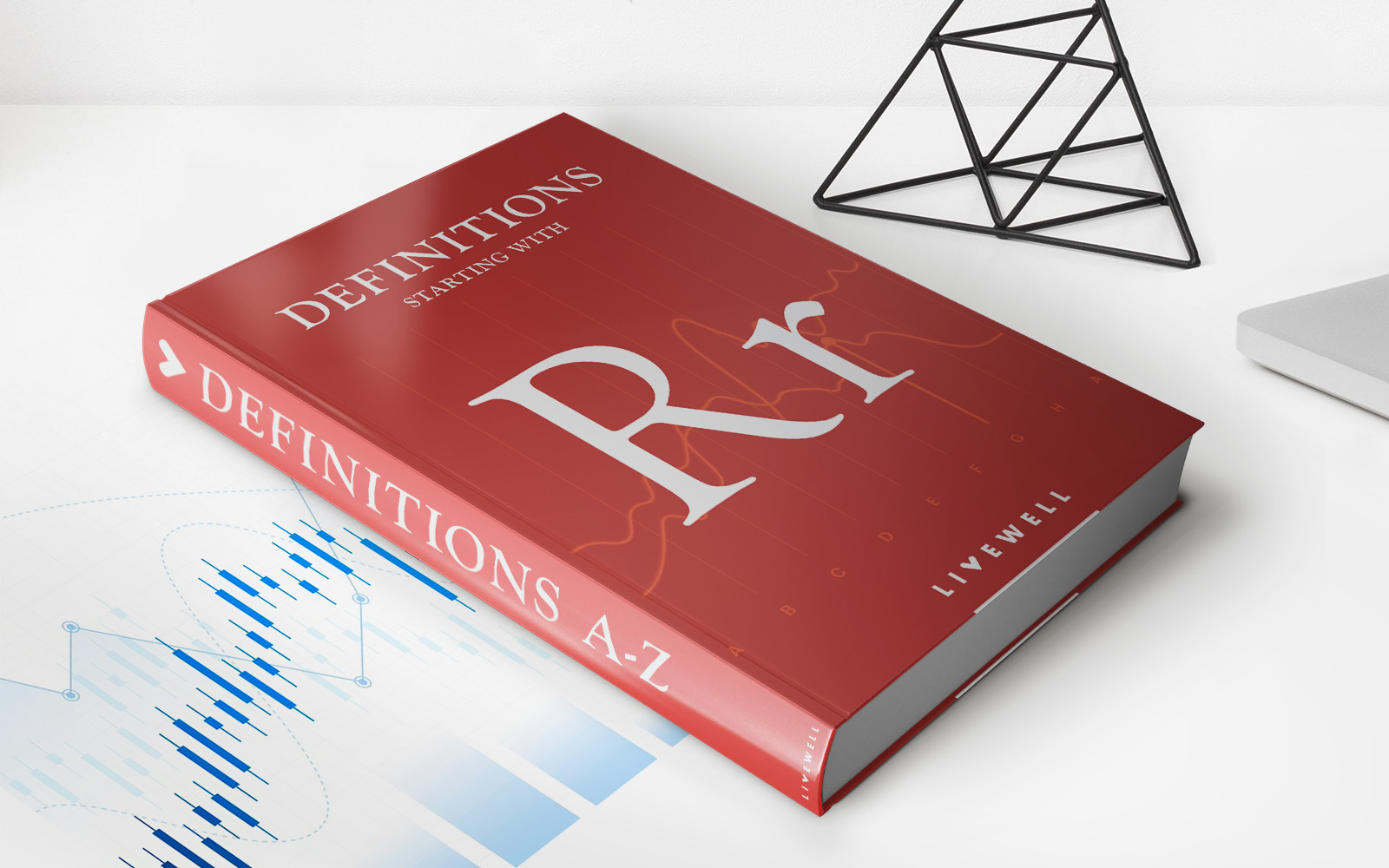

Finance
What Are Commercial Mortgage-Backed Securities
Published: November 26, 2023
Discover the world of commercial mortgage-backed securities and how they can contribute to your finance goals. Learn more about the benefits and risks involved in this type of investment.
(Many of the links in this article redirect to a specific reviewed product. Your purchase of these products through affiliate links helps to generate commission for LiveWell, at no extra cost. Learn more)
Table of Contents
Introduction
Welcome to a comprehensive guide on commercial mortgage-backed securities (CMBS). In the world of finance, CMBS plays a crucial role in providing financing for commercial real estate projects. This innovative financial instrument has gained popularity among investors and institutions looking for diversification and attractive yields.
CMBS are securities backed by a pool of commercial real estate loans. They allow lenders to sell off a portion of their loan portfolios to investors, thereby transferring the risk and unlocking liquidity. These securities are then structured and sold to investors in the form of bonds, offering a reliable income stream based on the underlying mortgage payments.
CMBS have become an important source of funding for developers and property owners, while also offering a range of investment opportunities for those seeking exposure to the commercial real estate market. In this guide, we will delve into the specifics of CMBS, exploring their structure, types, benefits, and risks.
Whether you are a seasoned investor or someone looking to understand the fundamentals of CMBS, this guide will provide you with the necessary insights to navigate this complex financial instrument.
Definition of Commercial Mortgage-Backed Securities (CMBS)
Commercial Mortgage-Backed Securities (CMBS) are a type of asset-backed security that is backed by a pool of commercial real estate loans. These loans are typically made to finance commercial properties such as office buildings, retail centers, hotels, and industrial facilities. CMBS allow lenders to transfer the risk of these loans to investors, providing liquidity to the lending institution and creating investment opportunities for buyers.
The basic structure of CMBS involves packaging multiple loans together and creating tranches, or segments, of securities. Each tranche represents a different level of risk and return for investors. The income generated from the underlying mortgage payments is passed through to the investors in the form of principal and interest payments. CMBS can be categorized as either pass-through certificates or real estate mortgage investment conduits (REMICs), depending on the way cash flows are distributed to investors.
CMBS offer a number of benefits for both borrowers and investors. For borrowers, CMBS provide access to capital at competitive interest rates, allowing them to finance large commercial projects. Additionally, CMBS can potentially offer longer loan terms and non-recourse financing, meaning that the borrower is not personally liable for repayment in the event of default.
For investors, CMBS can provide diversification within their investment portfolios. Investing in CMBS allows investors to gain exposure to a broad range of commercial properties across different geographical areas and sectors. By investing in multiple loans rather than individual properties, investors can spread their risk and potentially achieve higher yields compared to traditional fixed-income investments.
As with any investment, CMBS also carry certain risks. The performance of CMBS is heavily tied to the underlying commercial real estate market. Economic factors, such as changes in interest rates, vacancy rates, and property values, can impact the cash flows generated by the underlying mortgages. Furthermore, the strength of the borrower and the quality of the properties securing the loans can also affect the performance of CMBS.
In the next section, we will delve into the structure of CMBS, examining the different tranches and how cash flows are allocated to investors.
The Structure of CMBS
The structure of commercial mortgage-backed securities (CMBS) is designed to accommodate different risk appetites and investment preferences. CMBS are structured into tranches, which represent different levels of seniority and risk. Each tranche receives a portion of the principal and interest payments made by the borrowers of the underlying commercial real estate loans.
Typically, CMBS are divided into several tranches, including the senior tranche, mezzanine tranche, and subordinate tranche. Each tranche has its own priority of payment and level of risk. The senior tranche, also known as the Class A tranche, is considered the most secure. Investors in the senior tranche receive their principal and interest payments first, providing them with a lower risk profile compared to the other tranches.
The mezzanine tranche, often referred to as the Class B tranche, falls between the senior tranche and the subordinate tranche in terms of risk and return. Investors in the mezzanine tranche receive their payments after the senior tranche has been paid in full. This tranche carries a higher risk of default but also offers a higher potential return.
The subordinate tranche, sometimes called the Class C tranche, is the riskiest tranche. Investors in the subordinate tranche are the last to receive their payments, and they bear the highest risk of losses in the event of default. However, they also have the potential to earn the highest returns if the underlying loans perform well.
In addition to these tranches, there may also be a residual tranche, which captures any excess cash flows after all other tranches have been paid. The residual tranche is typically held by the issuer of the CMBS or sold to a separate investor.
The structure of CMBS is further enhanced by credit enhancement mechanisms. These mechanisms are designed to protect investors by providing additional safeguards against potential losses. Credit enhancement can take the form of overcollateralization, where the amount of underlying loans exceeds the value of the CMBS issued. This excess collateral provides a cushion to absorb losses in case of default. Another mechanism is the use of reserve funds, such as a cash reserve or liquidity reserve, which can be tapped into to make up for any shortfalls in mortgage payments.
Overall, the structure of CMBS allows for the customization of risk profiles and investment objectives. Investors can choose the tranche that aligns with their risk tolerance and return expectations. The next section will explore the different types of CMBS available in the market.
Types of CMBS
There are several types of commercial mortgage-backed securities (CMBS), each catering to different investor preferences and risk appetites. Understanding the different types can help investors make informed decisions based on their investment objectives and risk tolerance.
1. Traditional CMBS: This is the most common type of CMBS, backed by a pool of commercial real estate loans. The loans are typically secured by income-producing properties such as office buildings, retail centers, and hotels. Investors in traditional CMBS receive principal and interest payments based on the cash flows generated by the underlying mortgages.
2. Single-Asset CMBS: As the name suggests, single-asset CMBS are backed by a single commercial property loan instead of a pool of loans. This type of CMBS is often used for large, high-value properties such as skyscrapers or major hotel chains. Single-asset CMBS may have a higher concentration risk compared to traditional CMBS, as the performance of the investment is reliant on the success of a single property.
3. Small Business Administration (SBA) CMBS: SBA CMBS are backed by loans guaranteed by the U.S. Small Business Administration. These loans are specifically designed to support small businesses and are typically used to finance owner-occupied commercial real estate. SBA CMBS offer investors exposure to a different segment of the commercial real estate market and may provide additional guarantees from the government.
4. Balloon CMBS: Balloon CMBS have a unique structure wherein a large portion of the principal is due at maturity, similar to a balloon payment. This structure allows borrowers to make lower monthly payments during the term of the loan, but they must make a substantial payment when the loan matures. Balloon CMBS may attract investors looking for higher yields, as they typically offer higher interest rates to compensate for the increased payment risk.
5. Credit Tenant Lease (CTL) CMBS: CTL CMBS are backed by long-term leases with creditworthy tenants, such as government agencies or large corporations. These leases provide a reliable income stream, making CTL CMBS a lower-risk investment compared to other types of CMBS. Investors in CTL CMBS benefit from the stability of lease payments and the creditworthiness of the tenants.
6. Freddie Mac K-Series: These CMBS are issued by Freddie Mac, a government-sponsored enterprise (GSE). The K-Series offers investors exposure to multifamily residential properties, such as apartment buildings, through securitized mortgage loans. Freddie Mac K-Series CMBS are known for their standardized structure and transparency.
It’s important for investors to understand the nuances of each type of CMBS and assess how well they align with their investment objectives. The next section will discuss how CMBS operate and generate returns for investors.
How CMBS Work
Commercial mortgage-backed securities (CMBS) operate through a structured process that involves the origination of commercial real estate loans, their securitization, and the subsequent sale of the CMBS to investors. Understanding how CMBS work is essential for investors looking to participate in this market.
1. Loan Origination: The process begins with commercial real estate loans being originated by financial institutions, such as banks or mortgage lenders. These loans are typically made to finance income-producing properties, including office buildings, retail centers, hotels, and industrial facilities. The loans are underwritten based on the property’s financials, borrower qualifications, and other relevant factors.
2. Pooling of Loans: Multiple loans with similar characteristics are grouped together to create a pool of loans. These pools may contain loans of different property types and can be geographically diverse. The pooling process helps to spread risk across a portfolio of loans and increases the overall liquidity of the CMBS market.
3. Creation of Tranches: The pool of loans is then divided into different tranches based on risk and return preferences. Each tranche represents a different level of seniority and has unique characteristics. Senior tranches are allocated to investors seeking lower risk and lower returns, while subordinate tranches are offered to investors seeking higher risk and potentially higher returns.
4. Securitization: The tranches of loans are then bundled together to create the CMBS. These securities are backed by the cash flows generated from the underlying mortgage payments. The CMBS is structured as a pass-through certificate or a real estate mortgage investment conduit (REMIC), through which the cash flows are distributed to investors.
5. Sale to Investors: Once the CMBS are created, they are offered to investors in the secondary market. Institutional investors, such as pension funds, insurance companies, and asset managers, are the primary buyers of CMBS. The price of the CMBS is determined by market demand and investor perception of the underlying loan portfolio’s risk and return potential.
6. Distribution of Payments: The borrowers of the commercial real estate loans make their mortgage payments to a servicer, who then distributes the principal and interest payments to the investors in the different tranches. The distribution of payments follows a waterfall structure, with the senior tranche receiving payments first, followed by the mezzanine and subordinate tranches.
7. Monitoring and Reporting: CMBS investors rely on regular reporting and monitoring to assess the performance of their investments. Servicers or trustees provide detailed reports on loan payments, delinquencies, and other relevant information. Investors also rely on credit rating agencies to evaluate the creditworthiness and risk profile of the CMBS.
It is important for investors to conduct thorough due diligence and understand the specific terms and conditions of each CMBS offering before making an investment. By understanding how CMBS work, investors can better navigate the market and make informed investment decisions.
Risks and Benefits of Investing in CMBS
Investing in commercial mortgage-backed securities (CMBS) offers a range of potential benefits and risks that investors should consider before entering this market. Understanding these risks and benefits is crucial in making informed investment decisions. Let’s explore them in detail:
Benefits:
1. Diversification: CMBS provide investors with an opportunity to diversify their investment portfolios. By investing in a pool of commercial real estate loans, investors gain exposure to different property types and geographic locations. This diversification helps spread risk and potentially enhances overall portfolio performance.
2. Attractive Yields: CMBS can offer attractive yields compared to traditional fixed-income investments such as government bonds or corporate bonds. Investors are compensated for the risk associated with the underlying commercial real estate loans in the form of higher interest payments.
3. Income Stream: CMBS investors receive regular income in the form of principal and interest payments made by the borrowers of the underlying loans. This can provide a stable income stream and potentially serve as a source of passive income.
4. Liquidity: The CMBS market offers liquidity to both borrowers and investors. Lenders can sell off loans and convert illiquid assets into cash, while investors can buy and sell CMBS in the secondary market, providing an exit strategy if needed.
5. Risk/Return Profile: CMBS allow investors to choose a tranche that aligns with their risk tolerance and return expectations. Investors seeking lower risk can invest in senior tranches, while those seeking higher returns can consider subordinate tranches.
Risks:
1. Commercial Real Estate Market Risk: The performance of CMBS is closely tied to the commercial real estate market. Changes in economic conditions, such as interest rates, vacancy rates, or property values, can impact the cash flows generated by the underlying loans. A downturn in the commercial real estate market can lead to higher delinquencies and defaults.
2. Credit Risk: CMBS are exposed to credit risk, as the loans in the pool may default or have a higher risk of default. The creditworthiness of borrowers, property occupancy rates, and property market conditions can all impact the credit risk of CMBS.
3. Liquidity Risk: Although CMBS offer liquidity, there is a risk of limited liquidity in certain market conditions. During times of economic uncertainty, the availability of buyers in the market may decrease, making it challenging to sell CMBS at desired prices or within a desired timeframe.
4. Prepayment Risk: Borrowers have the option to prepay their commercial real estate loans, which can impact the cash flows to CMBS investors. Early prepayments can result in a loss of future interest payments, reducing the overall returns for investors.
5. Complexity and Information Asymmetry: The CMBS market can be complex, especially for individual investors without specialized knowledge. There can be information asymmetry between investors and issuers, making it challenging to fully evaluate the risk profile and performance potential of CMBS.
It is essential for investors to carefully assess these risks and benefits and to conduct thorough due diligence before investing in CMBS. Consulting with professional advisors and conducting research can help investors make informed decisions that align with their investment goals and risk tolerance.
Role of Credit Rating Agencies in CMBS
Credit rating agencies play a significant role in the commercial mortgage-backed securities (CMBS) market. They assess the creditworthiness and risk profile of CMBS offerings, providing investors with essential information to make informed investment decisions. The role of credit rating agencies in CMBS can be summarized as follows:
1. Credit Assessment: Credit rating agencies evaluate the credit risk associated with the underlying commercial real estate loans in a CMBS. They analyze factors such as the financial strength of the borrowers, property occupancy rates, property location, and market conditions. Based on their analysis, credit rating agencies assign a credit rating to each tranche of the CMBS.
2. Transparency and Standardization: Credit rating agencies bring transparency and standardization to the CMBS market. Their independent assessments provide investors with a benchmark to compare the credit quality of different CMBS offerings. Credit ratings help investors understand the risk and return characteristics of CMBS tranches, facilitating efficient pricing and trading in the secondary market.
3. Market Confidence: Credit rating agencies’ assessments and ratings are often seen as indicators of the risk associated with investing in CMBS. A higher credit rating suggests lower credit risk, which can boost market confidence and attract a broader investor base. Conversely, a lower credit rating may signal higher credit risk and prompt investors to demand higher yields.
4. Risk Mitigation: Credit rating agencies help mitigate information asymmetry between issuers and investors. They have access to extensive data and resources, enabling them to assess the creditworthiness of a CMBS more comprehensively. Their analysis provides investors with an independent and unbiased view of the risk factors associated with investing in CMBS, allowing investors to make more informed decisions.
5. Regulation and Compliance: Credit rating agencies are subject to regulatory oversight to ensure they adhere to stringent standards in their rating processes. Regulations, such as the Dodd-Frank Wall Street Reform and Consumer Protection Act, aim to enhance the quality and integrity of credit ratings. By complying with regulatory requirements, credit rating agencies help maintain market integrity and protect the interests of investors.
6. Dynamic Monitoring: Credit rating agencies continuously monitor the performance of CMBS to assess changes in credit risk. They may update their ratings based on new information or changing market conditions. This ongoing monitoring provides investors with up-to-date insights into the creditworthiness and risk profile of their CMBS investments.
It is important to note that credit ratings are opinions provided by credit rating agencies, and they are not immune to errors or changes in market conditions. Investors should conduct independent research and consider various factors beyond credit ratings when making investment decisions in CMBS.
Overall, credit rating agencies play a vital role in the CMBS market, helping investors evaluate risk, make informed investment decisions, and promote market transparency and confidence.
Historical Performance of CMBS
Understanding the historical performance of commercial mortgage-backed securities (CMBS) is crucial for investors to assess the risk and potential returns of these securities. While past performance is not indicative of future results, analyzing historical data can provide insights into the performance trends and risks associated with investing in CMBS.
Over the years, CMBS have experienced various performance patterns influenced by economic factors, real estate market conditions, and credit cycles. Here are key points to consider:
1. Diverse Performance during Economic Cycles: CMBS performance is closely tied to the economic environment. During periods of economic expansion, rising property values, low default rates, and high occupancy levels tend to support strong CMBS performance. Conversely, during economic downturns, there may be higher default rates, vacancies, and declining property values, which can impact CMBS performance negatively.
2. Impact of Financial Crises: CMBS performance was significantly affected during the 2008 global financial crisis, as property values plummeted, and default rates soared. Many CMBS suffered substantial losses, and investors experienced significant declines in their investments. However, it’s important to note that the performance of CMBS has improved since then, aided by stricter underwriting standards and enhanced risk management practices.
3. Recovery and Stability: Following the financial crisis, the CMBS market experienced a period of recovery and stability. As the global economy rebounded, CMBS performance improved, driven by factors such as low-interest rates, improved underwriting practices, and better risk management. The market regained investor confidence, and CMBS issuance increased steadily.
4. Impact of Interest Rates: CMBS performance can also be influenced by changes in interest rates. When interest rates rise, it can lead to higher borrowing costs, potentially affecting property valuations and resulting in higher default risks. Conversely, when interest rates are low, it can stimulate real estate activity and support CMBS performance.
5. Different Property Types: CMBS backed by different property types can exhibit varying levels of performance. For example, during economic downturns, CMBS backed by office or retail properties may face higher default risks due to decreased demand and increased vacancies. On the other hand, CMBS backed by well-performing sectors like industrial or multi-family properties may exhibit more stable performance.
It’s important to note that CMBS performance can vary significantly based on the quality of underwriting, loan characteristics, geographic location, and property-specific factors. Investors should carefully evaluate these factors and consider their risk tolerance and investment objectives when assessing historical CMBS performance data.
While historical performance provides useful insights, it is essential to approach investment decisions with a long-term perspective and consider a comprehensive range of factors, including current market conditions and future economic outlook, when assessing the potential risks and returns of investing in CMBS.
Current Trends in CMBS Market
The commercial mortgage-backed securities (CMBS) market is continually evolving, influenced by various economic factors, real estate trends, and investor sentiment. Understanding the current trends in the CMBS market can provide investors with valuable insights into the dynamics and potential opportunities within this asset class. Here are some key trends shaping the CMBS market:
1. Increased Issuance: The CMBS market has experienced an uptick in issuance in recent years. This can be attributed to favorable market conditions, improved economic stability, and investor demand for yield-generating assets. As the economy recovers from the impact of the COVID-19 pandemic, the CMBS market is expected to see increased activity and a wider range of offerings.
2. Focus on Underwriting Standards: Following the 2008 financial crisis, there has been a focus on enhancing underwriting standards within the CMBS market. Lenders and investors have become more cautious, ensuring that loans are assessed based on stricter criteria. This emphasis on prudent underwriting aims to mitigate risks and improve the overall credit quality of CMBS offerings.
3. Rise of Single-Asset CMBS: Single-asset CMBS, which are backed by a single commercial property loan, have gained popularity. These offerings provide investors with targeted exposure to specific properties and can be attractive for those seeking to invest in high-value assets that may have unique financing requirements or potential for higher returns.
4. Green CMBS: There is a growing focus on sustainability and environmental responsibility, leading to the emergence of “green” CMBS. These securities are backed by loans for properties that have eco-friendly features or meet specific sustainability standards. As environmental consciousness increases, the demand for green CMBS is expected to rise, providing opportunities for investors interested in sustainable investments.
5. Impact of Technology: The CMBS market is embracing technological advancements to streamline processes and improve efficiencies. Technology-driven platforms have emerged, facilitating loan originations, securitizations, and investor interactions. These innovations aim to enhance transparency, reduce costs, and provide faster access to data and information for investors in CMBS.
6. COVID-19 Pandemic: The global pandemic has had a significant impact on the CMBS market, as it has affected the commercial real estate industry. Depending on the sector, properties such as hotels, retail centers, and office spaces have faced challenges due to closures, reduced occupancy, and changing consumer behavior. As the economy continues to recover, the performance of CMBS tied to these sectors will be closely monitored by investors. Market participants are assessing the long-term implications and potential opportunities arising from the post-pandemic real estate landscape.
It is important for investors to stay informed about current trends and developments in the CMBS market. This includes monitoring economic indicators, regulatory changes, and shifts in investor sentiment. By staying attuned to these trends, investors can make more informed decisions and identify opportunities that align with their investment goals and risk tolerance.
Conclusion
Commercial mortgage-backed securities (CMBS) offer investors an avenue to gain exposure to the commercial real estate market, while providing borrowers with access to capital. Throughout this comprehensive guide, we have delved into the intricacies of CMBS, exploring their structure, types, benefits, risks, and historical performance.
CMBS present several benefits, including diversification, attractive yields, steady income streams, and liquidity. Investors can tailor their risk and return preferences by selecting the appropriate tranche that aligns with their investment objectives. However, it is important to consider the inherent risks, such as economic cycles, credit risk, liquidity risk, prepayment risk, and complexity.
Credit rating agencies play a vital role in the CMBS market, providing independent assessments of the creditworthiness and risk profile of CMBS offerings. Their evaluations help investors evaluate the risks associated with investing in CMBS and make informed decisions.
The CMBS market is continuously evolving, shaped by economic conditions, real estate trends, and investor sentiment. Current trends indicate increased issuance, a focus on underwriting standards, the rise of single-asset and green CMBS, the impact of technology, and the ongoing effects of the COVID-19 pandemic.
As with any investment, it is essential to conduct thorough due diligence, assess market conditions, and seek professional advice before investing in CMBS. Investors should carefully analyze the specific characteristics of each CMBS offering and evaluate its fit within their investment strategy.
In conclusion, CMBS offer investors the opportunity to participate in the commercial real estate market, diversify their portfolios, and potentially earn attractive yields. However, a comprehensive understanding of CMBS, along with careful risk assessment, is crucial for successful investment decisions in this complex and dynamic market.














